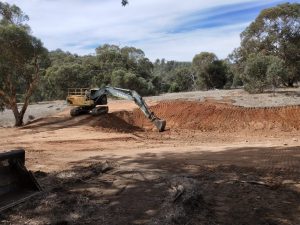An excavator or digger is one of several construction heavy equipment that you typically see in a job site. Its primary purpose is to dig up earth, but a digger can also serve several functions, making it an extremely versatile machine.
Types of Diggers and their Uses in Construction
There are various types of diggers you can hire, so it helps to know what features separate one from the others. An excavator typically features a rotating house or cabin where the operator controls the movement of the machine and its parts. Diggers also come with boom, arm and bucket attachments.
If you’re considering hiring one, knowing what diggers are available can help you choose which type of excavator suits your requirements.
Below are common types of excavators.
Crawlers
The distinguishing feature of a crawler excavator is its two rotating track frames that allow it to manoeuvre easily on uneven, muddy or sloped terrain. It moves slower than wheel-type diggers, but this characteristic provides a crawler increased stability. Crawlers are useful in landscaping, trenching, and mining operations.
Wheeled
Wheeled diggers have wheels instead of rolling tracks. This type of digger is suitable for hard, smooth surfaces like concrete. Wheeled diggers are typically used in urban earthmoving projects such as road clearing, scrapyard works, material movement, and installation of buried services.
Long Reach
Long-reach excavators come with an extendible arm attachment that allows the machine to dig up and move materials at a safe distance. Depending on the design, the arm of long reach excavators can range between 40 to 100 feet. Digging up wells, cleaning rivers and canals, and demolishing old bridges or flyover are some projects where long reach diggers are efficient.
Suction
Suction or vacuum excavators come with a suction tube attachment instead of the usual boom, arm and bucket attachments. This type of excavator uses a heavy-duty fan system to suck up debris from a hole or remove materials from buried utility services without coming in contact or damaging them. Suction diggers are common in deep excavation projects and the installation or repair of underground cables and pipes.
Hydraulic Shovel
Hydraulic shovel excavators are the most powerful type of diggers, typically used in large-scale construction and mining projects. Its bucket attachment is larger than that of a standard excavator and it comes with pointed blades. Hydraulic shovel excavators are recommended for coal mining operations and similar projects requiring heavy digging and lifting.
Backhoe
A backhoe is a type of digging equipment that resembles a tractor and is smaller than standard excavators. It also has arm and bucket attachments, but these parts are found both at the front and back of the cabin. Unlike standard excavators, the boom and chassis of a backhoe can only rotate at a 200-degree angle instead of 360 degrees. Construction projects such as laying down the foundation of structures and earthmoving activities like digging up ditches and trenches and installing underground cables use backhoes.
Skid Steer
Skid steers are smaller than standard excavators. It runs on wheels and its bucket attachment faces away from the driver. Because of its size, a skid steer is ideal for residential projects or work sites with narrow spaces.
Dragline
Dragline excavators use a wire cable instead of an arm attachment for holding the bucket. This type of digging machine is common in dredging and underwater excavation projects. It can also be used in pier construction, surface mining and road excavation.
Need plant hire for your construction projects? Contact Dobson Excavations here for an obligation-free quote or call our hotline for more information about our services.
Posted on https://www.dobsonexcavations.com.au/when-are-diggers-useful-during-construction/

